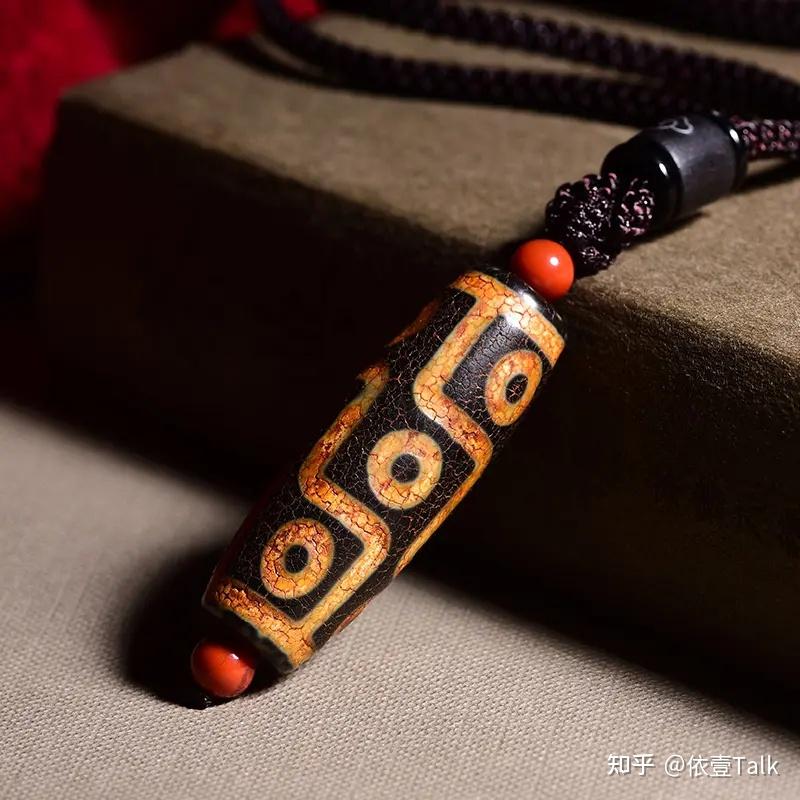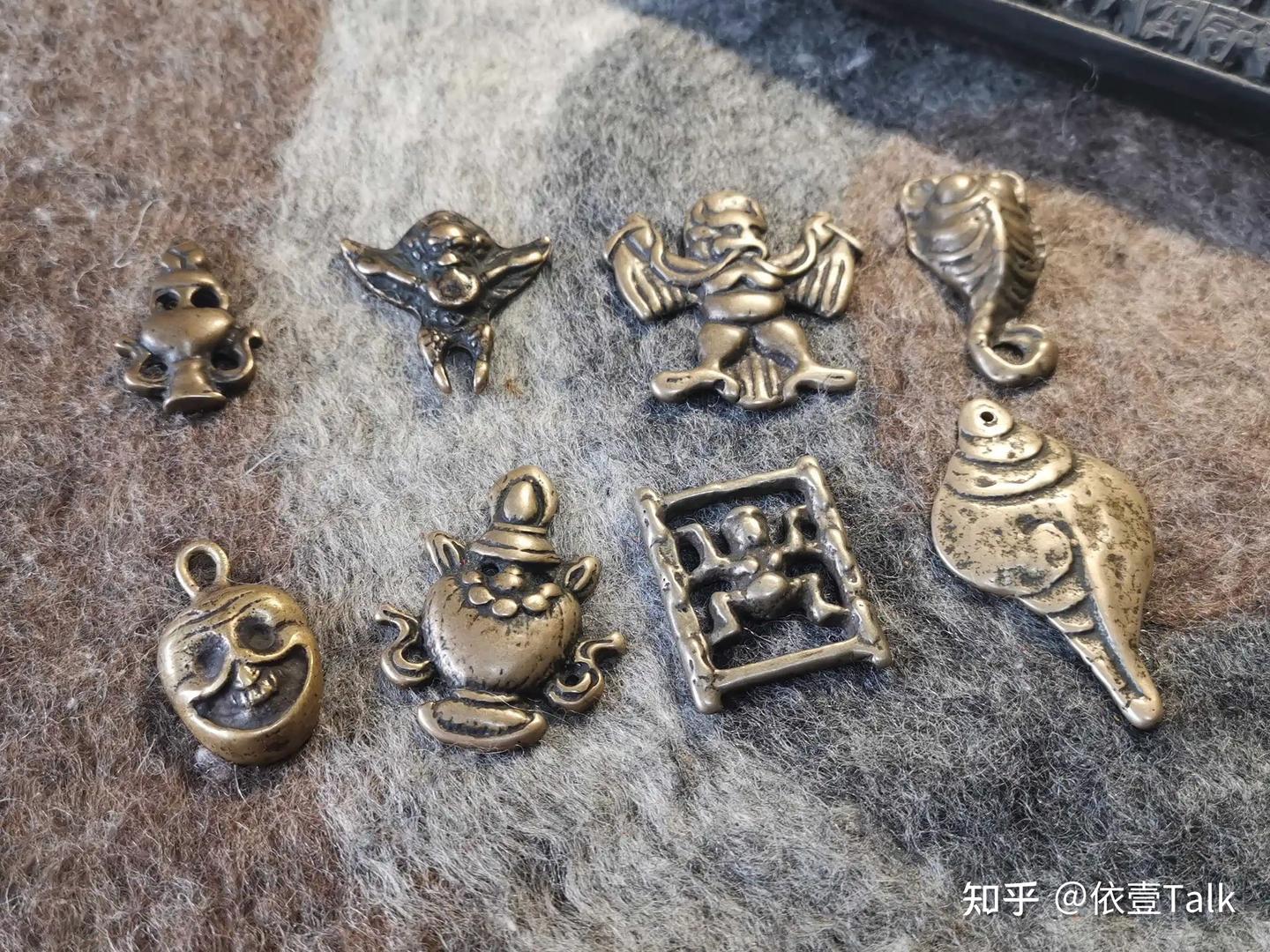
Tibetan Jewelry: History and Decorative Art
Share
As a typical ethnic minority in China, the Tibetans have formed a unique culture and living customs in the process of development over the years. Tibetan jewelry, as an important part of Tibetan culture, is one of the unique decorative arts of the Tibetans and has a strong artistic atmosphere. Tibetan jewelry has a unique aesthetic significance and has become more and more diverse after years of development. Based on this background, this article will briefly explain the types of Tibetan jewelry and the common Tibetan jewelry at this stage, and on this basis, conduct a systematic analysis of the decorative art of Tibetan jewelry and its profound connotation.

In the long process of historical development, the Tibetans have always advocated knowledge and art and have been creative and innovative. Therefore, they have created a unique and splendid national culture. As an important part of Tibetan culture, jewelry culture has gradually matured over the years. From the overall development process of the Tibetans, in the process of jewelry development, they have continuously given it specific ideas and artistic significance. On the one hand, Tibetan jewelry directly expresses its artistic significance in form; on the other hand, it precipitates the artistic connotation of Tibetans in different eras. With the development and progress of the times, the artistic connotation of Tibetan jewelry has been continuously enriched.

There are many types and quantities of Tibetan jewelry, and the textures of different jewelry are different. At present, the common jewelry of Tibetans in China are made of different types of materials such as metal products, stone products and bone products. Among them, natural materials such as Dzi beads, Tibetan silver, agate, turquoise, coral, and beeswax are the most widely used. Different materials also have different meanings. For example: ① Dzi beads: Dzi beads are regarded as the most precious jewelry and "living gems" by the Tibetan people. They are translated as "Se" in Tibetan. In Tibetan history, the earliest Dzi beads are Zhangxiong Dzi beads. , was born in the ancient Zhangzhung Kingdom and is a member of the Bon religion. The Dzi bead is a creature that is the first of the seven treasures of Tibetan Buddhism. The meaning of Dzi beads is similar to a talisman that brings good luck and blessings, and different types of Dzi beads have different meanings. For example, the three-eyed Dzi bead, "three" represents the "three treasures" in Tibetan culture. Therefore, the Tibetan people believe that the three-eyed Dzi bead has the blessing of the three treasures, which means clearing away obstacles and symbolizing good luck. At the same time, its "three eyes" also symbolize the right time, the right place, and the right people, meaning that it can produce all wealth; and the most precious nine-eyed Dzi bead , people believe that the wearer can avoid all disasters. ② Tibetan silver: Tibetan silver is actually a silver-containing alloy produced in Tibet. Although traditional Tibetan silver has a similar texture to silver, its glossiness is slightly inferior to that of silver. This slightly dark color also gives the jewelry an ancient and primitive appearance. In the eyes of the Tibetan people, this ancient color just reflects their simple national style. ③ Coral: Tibetan people believe that red coral is a kind of auspicious object. Therefore, it is often used to make beads or decorations. Tibetan people also often wear red coral products to attend some important occasions. ④ Beeswax: As the saying goes, "Amber for a thousand years, beeswax for ten thousand years." Since ancient times, beeswax has been deeply loved by the Tibetan people and they are considered to be auspicious and sacred treasures. Due to the special appearance of beeswax, it is revered by the Tibetan people as a treasure that contains mysterious power and spirituality. ⑤ Turquoise :Turquoise symbolizes heaven, water and air in the hearts of Tibetan people. Therefore, they believe that turquoise can be widely used in various decorations. Although the materials are diverse and the meanings are very different, they all embody the Tibetan people's yearning and pursuit for a better life.

In addition to the above-mentioned natural materials, due to the continuous improvement of my country's overall scientific and technological level in recent years, Tibetan jewelry has also kept pace with the times, and corresponding jewelry made of modern materials has appeared. According to relevant surveys, silver jewelry is the main jewelry of the Tibetan people at this stage. In addition, Tibetan jewelry can also be divided into gold and silver hand jewelry, silver-based daily necessities, pure ornaments, gold and silver-based storage and collection crafts and religious supplies according to different market needs. The Tibetan people themselves like silver crafts and jewelry very much, so Tibetan jewelry continues to develop. Among the Tibetans, the silverware industry has a history of 100 years. Tibetan women's rings, earrings and bracelets are all made of silver in Tibetan areas.

Since the Tibetan people have a deep affection for jewelry, the jewelry industry has manufactured jewelry of different types and functions according to the specific needs of the market. Jewelry is not only the main form of expression of Tibetan art, but also an indispensable part of the daily life of the Tibetan people. Most Tibetan people are nomadic peoples. Years of life on the move have forced the Tibetan people to ensure that their wealth is carried with them by appropriate means. Under such needs, Tibetan jewelry is particularly important. During the years of migration, the Tibetan people have turned their own wealth into jewelry. Therefore, Tibetan jewelry not only has important artistic value, but also has certain wealth value. It can be said that Tibetan jewelry is a symbol of wealth for the Tibetan people. According to the different types of jewelry, it can be divided into the following three types: First, jewelry. Jewelry is more common in the daily life of Tibetan women. Women often need to wear bracelets, earrings, rings and other jewelry in their daily lives; second, accessories. Compared with jewelry, Tibetan accessories have a stronger role in accessories; third, clothing accessories. Clothing accessories mainly play a decorative role in the daily clothing and festival clothing of the Tibetan people.

The two major categories of jewelry and accessories can be further subdivided into: headwear, necklaces, earrings, rings, bracelets, etc. ① Headwear: In Tibetan tradition, both men and women have the habit of growing long hair and braiding their hair. Tibetans are very concerned about headwear, and a large part of the reason is that in ancient times, the different materials and forms of Tibetan headwear had the function of distinguishing classes. For example, headwear such as "Bazhu" was originally worn exclusively by dignitaries. At the same time, there are many types of Tibetan headwear. Most of the Tibetan headwear is made of colorful agate, turquoise, coral and other gemstones woven into a mesh-like form. When worn, it is "spread" on the head like a net, and there are pendants hanging in front of the forehead, which looks very luxurious. ② Necklace: Necklaces with Tibetan characteristics are mainly made of turquoise, agate, beeswax, Tibetan silver and other materials, and their colors are often red, green, white and yellow. It is worth mentioning that Tibetan necklaces Although there is no specific requirement for the number of beads, most people generally agree that 108 beads are the standard, which is related to Tibetan culture. In addition to beads, Tibetan necklaces also have pendant shapes, which are often teardrop-shaped or round. The most precious of them are "sky beads" called "se", and "nine-eyed sky beads" are the treasures of treasures. ③ Earrings: Tibetan earrings have different shapes, some are long and some are short, but they are mainly made of gold and silver with turquoise and agate embellishments. Most of them are red and green, solemn but not gorgeous. ④ Rings: The composition of Tibetan rings is roughly similar to that of Tibetan earrings, but when making rings, people will choose larger gems for embellishment, and often wear multiple rings at the same time when wearing them - in addition to the love of beauty, the size of the gems and the number of rings worn are also symbols of wealth in Tibetan tradition. ⑤ Bracelets: Tibetan bracelets can be roughly divided into three types: the first is mainly made by carving Tibetan patterns on gold and silver and then embellishing them with gems such as turquoise and agate; the second is to grind crystal, glass, bodhi seeds, lapis lazuli and other gems into beads about the size of peanuts or larger, and string them into beads that can only wrap around the wrist; the third is similar to Tibetan necklaces, which are made by grinding agate, turquoise, coral, bodhi seeds and other materials into mung bean-sized beads, usually strung together with 108 beads, and this type of bracelet is also popular locally. It can be seen that for the Tibetan people, jewelry is not only a symbol of wealth, but also a manifestation of faith.

